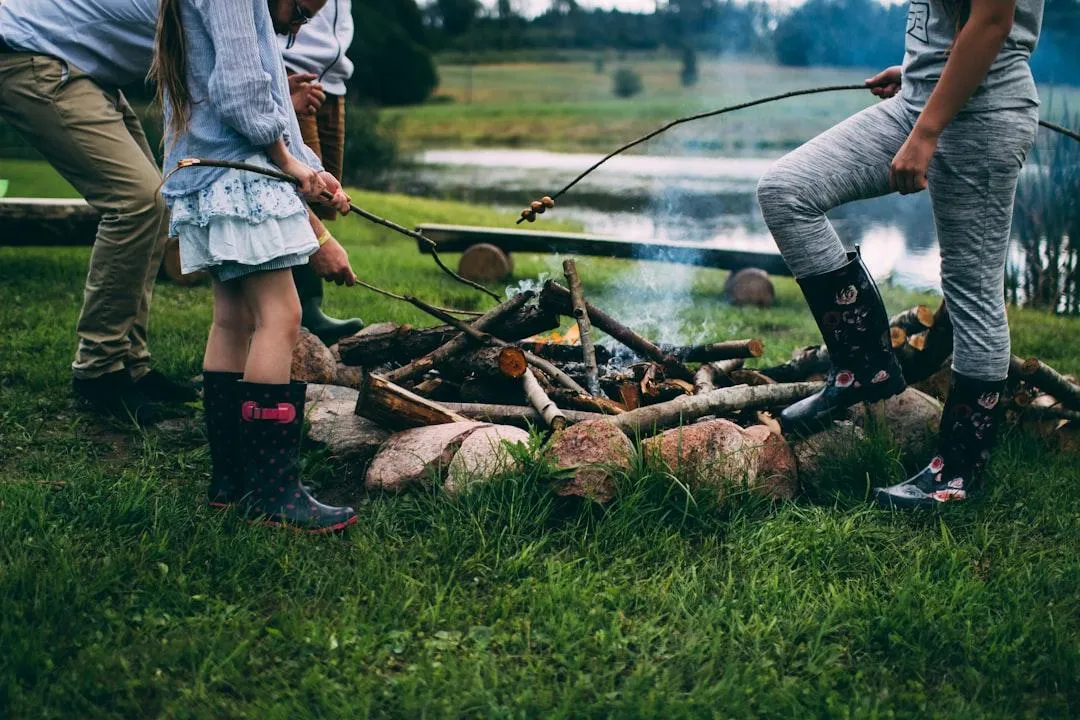
HOMESTEAD FANATIC BLOG
Discover amazing destinations, plan your perfect trip, and book unforgettable experiences. Our travel website makes traveling around the world easy, enjoyable, and hassle-free.
EXPLORE GREAT PLACES
THE HOMESTEAD BLOG

How to Build a 72-Hour Emergency Kit: The Ultimate Checklist
How to Build a 72-Hour Emergency Kit: The Ultimate Checklist
Disasters can strike at any moment, leaving you without access to essential resources such as food, water, and electricity. A well-prepared 72-hour emergency kit can make a significant difference in your survival and comfort during an emergency. This guide provides a comprehensive checklist to help you assemble an effective kit for any situation.
Why You Need a 72-Hour Emergency Kit
A 72-hour emergency kit is designed to sustain you and your family for at least three days during a crisis. Natural disasters, power outages, and other emergencies can disrupt normal services, making it crucial to have essential supplies on hand. Having a kit ready ensures that you remain self-sufficient until help arrives or conditions stabilize.
Essential Components of a 72-Hour Emergency Kit
1. Water Supply
Water is the most critical component of any emergency kit. Dehydration can set in quickly, making it essential to have a reliable water supply.
At least one gallon per person per day (for drinking and sanitation)
Water purification tablets or a portable water filter
Collapsible water containers for easy storage
Reusable water bottles
Boiling kit (small camping stove) to purify water if needed
Extra water for pets
2. Food and Nutrition
Having adequate food ensures that you and your family maintain energy levels during an emergency.
Non-perishable food items such as canned goods, granola bars, and dried fruits
High-energy snacks like nuts and protein bars
Manual can opener
Baby food and formula (if applicable)
Pet food (if applicable)
MREs (Meals Ready to Eat)
Instant coffee and tea packets
Comfort food (chocolate, cookies) for morale
Cooking utensils and a small portable stove
Fuel canisters for cooking
3. First Aid and Medical Supplies
A well-stocked first aid kit can make a huge difference in medical emergencies.
First aid kit with bandages, antiseptic wipes, and pain relievers
Prescription medications (at least a three-day supply)
Personal hygiene products (toothbrush, toothpaste, soap, hand sanitizer, feminine hygiene products)
Emergency contact list with important phone numbers
Tweezers, scissors, and safety pins
Sunscreen and insect repellent
Allergy medications and EpiPen (if necessary)
Emergency dental repair kit
Over-the-counter medications (antacids, anti-diarrheal, antihistamines)
4. Emergency Shelter and Clothing
Protecting yourself from the elements is essential for survival.
Emergency blankets or sleeping bags
Change of clothes and sturdy footwear
Waterproof ponchos or rain gear
Tent or tarp for temporary shelter
Hats and gloves for cold weather
Extra socks and undergarments
Thermal layers for insulation
5. Tools and Equipment
The right tools can help you handle various emergency situations effectively.
Multi-tool or Swiss Army knife
Flashlights with extra batteries
Portable solar charger or power bank
Duct tape and zip ties for emergency repairs
Work gloves and dust masks
Fire-starting kit (waterproof matches, lighters, and fire starters)
Folding shovel
Rope or paracord for securing shelter
Small sewing kit for fabric repairs
Glow sticks for lighting without electricity
6. Communication and Navigation
Staying informed and being able to communicate during a crisis is crucial.
Battery-powered or hand-crank emergency radio
Whistle for signaling for help
Local maps and a compass
Waterproof notepad and pencil
Prepaid emergency cell phone or two-way radios
Walkie-talkies with extra batteries
USB drive with important digital documents
7. Personal Documents and Cash
Having your personal information organized can be a lifesaver in an emergency.
Copies of identification documents (driver’s license, passport, birth certificates)
Insurance policies and emergency contact numbers
Cash in small denominations (ATMs may not be available)
Copies of medical records and prescriptions
List of emergency numbers and family contacts
8. Safety and Self-Defense
Protection may be necessary, depending on the nature of the emergency.
Pepper spray or personal safety device
Fire extinguisher (small, portable)
Emergency whistle and signaling mirror
Personal alarm or siren
Self-defense training (if possible)
Small tactical flashlight with strobe function
Additional Considerations for Your Emergency Kit
For Families with Young Children
If you have infants or toddlers, include:
Diapers and wipes
Extra baby formula and bottles
Small toys and books for comfort
Child-friendly snacks
Baby medication and thermometer
For Elderly Family Members
Older adults may have special needs that require extra preparation.
Extra prescription medication
Walking aids or mobility support devices
Medical alert bracelet
Dietary-specific food items
For Pets
Pets are family too, and they need their own emergency supplies.
Extra food and water
Leash and harness
Pet carrier for transport
Medications and vaccination records
Comfort items (blanket, small toy)
Packing and Storing Your Kit
Store your emergency kit in a durable, waterproof backpack or container
Keep it in an easily accessible location
Periodically check and update your kit every six months to replace expired items
Consider having separate kits for home, car, and workplace
Label all items clearly for easy identification
Distribute weight evenly if packing multiple bags
How to Maintain Your 72-Hour Emergency Kit
A 72-hour emergency kit isn’t something you build once and forget. It requires periodic maintenance to ensure everything remains functional.
Check food and water supplies every six months
Replace expired medications
Rotate batteries to ensure they work when needed
Update documents and contacts as necessary
Test tools like flashlights and radios to confirm they are operational
Final Thoughts
Being prepared with a 72-hour emergency kit gives you peace of mind and the ability to handle unexpected disasters. By ensuring that your kit contains essential survival items, you increase your chances of staying safe and comfortable during an emergency. Start building your kit today and encourage your family and friends to do the same! The time you invest in preparing now could make all the difference in a future emergency.

POPULAR QUESTIONS
Asked Questions ?
Many people interested in homesteading ask about how to get started, what animals and crops are best for beginners, and ways to generate income from their land. Food preservation techniques are also a common topic, as self-sufficiency plays a key role in homesteading success. These FAQs provide a helpful starting point for anyone looking to embrace a more independent and sustainable lifestyle.
What is homesteading?
Homesteading is a lifestyle focused on self-sufficiency, which often includes growing your own food, raising livestock, preserving food, and using sustainable practices to reduce reliance on modern systems.
How do I start homesteading with little or no land?
Even if you don’t have a large property, you can start small by container gardening, keeping backyard chickens (if permitted), composting, and learning essential skills like food preservation and DIY projects.
What animals are best for a beginner homesteader?
Chickens, rabbits, and ducks are great starter livestock. They require less space, are relatively easy to care for, and provide eggs or meat while helping with pest control.
How can I make money from homesteading?
Many homesteaders generate income by selling eggs, honey, homemade goods, fresh produce, handmade crafts, or even offering homestead-related workshops.
What are the best crops for beginner homesteaders?
Easy-to-grow crops include tomatoes, zucchini, lettuce, radishes, and herbs like basil and mint. These require minimal maintenance and provide a great starting point for new homesteaders.
How do I preserve food for long-term storage?
Canning, dehydrating, freezing, and fermenting are all effective ways to preserve food. Each method has its benefits, depending on the type of food and your available storage space.

Your Gateway to Global Adventures Await Here.
Quick Links
Home
About Us
Services
Blog
Quick Links
Email:
